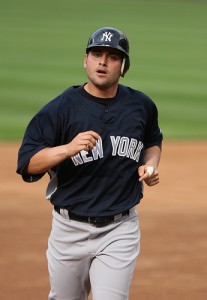 Back in early April we announced our plans for The 2009 RAB Pledge Drive, which we’re using to raise money for Joe Torre’s Safe At Home Foundation. The basic idea is that readers pledge a certain amount of money for every run the Yanks score this year, then at the end of the season we would collect all the pledges and donate every cent to Safe At Home. We ran a similar pledge drive last year, raising $1,050 for The Jorge Posada Foundation.
Back in early April we announced our plans for The 2009 RAB Pledge Drive, which we’re using to raise money for Joe Torre’s Safe At Home Foundation. The basic idea is that readers pledge a certain amount of money for every run the Yanks score this year, then at the end of the season we would collect all the pledges and donate every cent to Safe At Home. We ran a similar pledge drive last year, raising $1,050 for The Jorge Posada Foundation.
To date, we’ve had 24 kind readers agree to pledge, good for $1.72 per run scored. Even though they didn’t have Alex Rodriguez for the first month of the season, the Yanks have scored 495 runs, the most in baseball. That means we’ve already raised $851.40 for Safe At Home through 88 games. We’re currently on pace to raise over $1,500 over the course of the season.
If you haven’t pledged yet but want to do so, just shoot me an email at mike (at) riveraveblues (dot) com, and make sure you put Pledge Drive or something to that affect in the subject line. Most people are pledging five cents per run, but you’re more than welcome to pledge more or less. Every penny helps. Regardless of your feelings towards Joe Torre, I think we can all agree that domestic violence is something no child should have to endure. This is a chance for you to do something and help some poor unfortunate kid out there. Thanks to everyone who’s already pledged, and thanks in advance to anyone who plans to pledge in the future.
* * *
On a much lighter note, feel free to use this as your open thread since we have no Yankees baseball. Feel free to chat about whatever you like here, just be nice.
